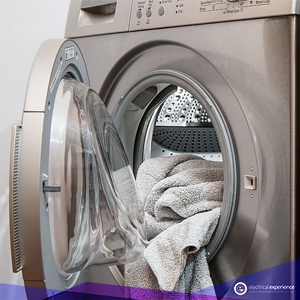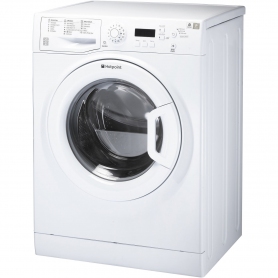Washing Machine Buying Guide
11th Feb 2020

It can be difficult to select the right washing machine for your home. With a variety of options and features to choose from, you’ll need to decide which option is best for you. Not everyone requires a full feature washing machine, but some homes may require some extra features based on family habits and how many people live in the house.
We’ve put together some advice on buying a washing machine to help you make an informed decision and make sure you select the right machine for your family.
Before you start
You will need to assess the space in your kitchen or utility room and decide if you require a freestanding or integrated washing machine. The most popular option is freestanding as it doesn’t need to be built into your kitchen unit, all you’ll need is a drain connection and an electrical socket. Most kitchens have an allocated space with these connections easily accessible.
When choosing your new washing machine, you will need to aware of the measurements of the space allowing plenty of space on all sides, as freestanding appliances will vibrate when not fixed in place. Most washing machines are the same size, measuring (height) 850mm x (width) 600mm x (depth) 600mm but these sizes can vary, so it's important to measure up before you buy.
Types of Washing Machines
What is a front loading washing machine?
A front loading washing machine simply means that clothing is loaded into the front of the machine rather than the top. Most UK washing machines are front loading, as appose to top loading machines which are more popular in the US. Front loading washing machines are useful if your family home is short on space, as they can be stacked (you may need extra kit to ensure the machines are secure).
Front loading washing machines are proven to be more energy efficient and many have higher spin speeds, meaning that you’ll be cutting the drying time down.
What is a cold fill washing machine?
All modern washing machines sold in the UK is cold fill. This simply means that rather than your boiler loading in hot water, your washing machine will heat the water on its own. Manufacturers prefer cold fill machines as they are more efficient as they only use the exact amount of water needed for that wash.
Drum Size and Capacity
Washing machines come in a range of drum sizes, determining the weight of dry clothing you can safely wash in one cycle.
Most machines start at 6kg and go up to 12kg. When selecting the right capacity for your family, you will need to consider how often you put on a wash and the size of each cycle. In most cases, an 8kg drum will comfortably fulfil the needs of medium UK household.
For larger UK households, with large or heavily soiled loads, you’ll need a larger capacity washing machine.
What is right for my family?
Bigger doesn’t always mean better. Larger machines are usually more expensive, and if you only manage to regularly use half of the machine, running costs will be higher too. Fewer but larger washes are more economical, so it’s important to understand how much capacity you require.
A perfect example for a standard UK family household of 4 would be the Hotpoint 9kg 1400 Spin Washing Machine, rates A+++.

Common loading issues
- Shoving in those last few items to save another load can affect the quality of the wash
- Overloading can cause clothing to ‘clump’ and not allow detergent to spread evenly
- Underloading wastes water and energy
- Some detergents will produce excessive foam if the load is too small
Washing Machine Styles
You don’t have to sacrifice the style of your kitchen when buying a new washing machine. Whilst you may want to opt for the traditional white washing machine, modern designs are now offering a variety of colours, doors and high-tech controls.
If you’re wanting to match your washing machine with your home’s décor, you may consider different features, like the popular large porthole doors, with some models opting for stylish dark glass doors.
If the washing machine will be going inside a utility room, the look of the machine probably isn’t that important.
Washing Machine Features
With the advancement of technology, washing machines can offer a lot more with a whole host of convenient features. High-end models will likely have feature touch displays and even smartphone integration to make managing your families washing easier than ever.
Many modern models will also include safety features to ensure your little ones do not cause a flood or even change the washing program.
A general room of thumb is that the more features the washing machine has, the more expensive it will be. You’ll need to decide if the convenience of the extra features is important to your household.
Programmes, Cycles and Noise
Extra programmes and cycles offer extra convenience to the family home, including quick washes and slower spin speeds to reduce the ironing (something that will hugely benefit larger family homes).
If you have very young children in the home or simply would prefer to do your washing at night, you will want to consider noise ratings. High-end models will typically include quiet drive motors and anti-vibration systems. As a general rule of thumb, anything below 50dB is considered a quiet model and the highest noise level can be up to 80dB.
Energy Ratings
If you’re upgrading your washing machine to a newer model, you will want to pick a machine that will save you some money on your energy bill. Since 2014, washing machines can only be rated A+++ (most energy efficient), A++, A+ or A.
Any models rated below A will have been manufactured before 2014 and will not provide you with the best energy efficient, an extremely important factor to consider, especially if you’re a larger household.
Ready to find the perfect washing machine for your household? Click here to shop the range.




